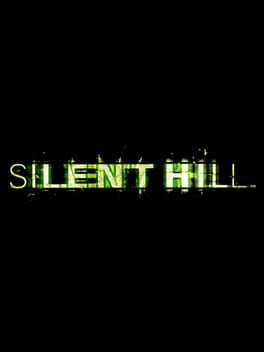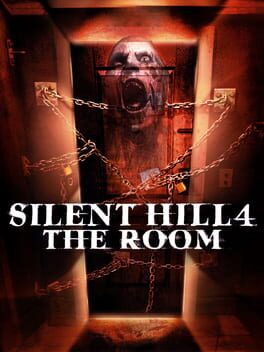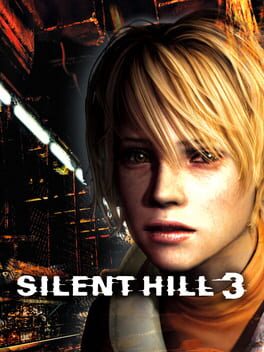

Silent Hill: Play Novel is an adaptation of the original Silent Hill for Game Boy Advance in the form of visual novel. It was only released in Japan, but the game has been translated and adapted into different ports by fans. Silent Hill: Play Novel is an interactive story: at certain moments the player is asked to choose between two or more possible options, which can affect the rest of the story. Besides the narration, the game features some puzzles and multiple endings.
Also in series
Reviews View More
(Got one of the bad endings with Harry's campaigj think, might try for one of the others/will have long after writing this)
I'm very impressed with this. Despite being in a more limited format technically, this is still an incredibly chilling and entertaining experience. The multiple routes with the occasional new scenario are a treat and provide good replay value.
Imo this is a real treat, for new or existing SH fans.
I'm very impressed with this. Despite being in a more limited format technically, this is still an incredibly chilling and entertaining experience. The multiple routes with the occasional new scenario are a treat and provide good replay value.
Imo this is a real treat, for new or existing SH fans.
Quite the ambitious visual novel I'd say. You can easily recreate Good+ from SH1 but outside of that, things can go so different and so horribly wrong it's insane, y'know we think things are a given in these stories sometimes, especially after they're over but things like this remind you how wrong everything could go, and this game certainly shows it, excellent job at horror. Also Cybil campaign, nice!
Used the Fan Translation obviously, tho I think the fan PC version should also serve you well. Funny, this game came out the same year as SH2.
I went for all the routes and endings and got every card that is possible to get without the now lost DLCs (yes DLCs on GBA). Andy appearing is quite curious in the main game as one of the 4 DLCs was centered around him, I hope these get found, preserved and translated at some point cuz this is quite curious.
Used the Fan Translation obviously, tho I think the fan PC version should also serve you well. Funny, this game came out the same year as SH2.
I went for all the routes and endings and got every card that is possible to get without the now lost DLCs (yes DLCs on GBA). Andy appearing is quite curious in the main game as one of the 4 DLCs was centered around him, I hope these get found, preserved and translated at some point cuz this is quite curious.
I was talking with a friend a few months back about how there seemed to be this cheery and upbeat trend with Game Boy Advance titles. In essence, I think this is a classic case of developers adapting to the limitations of the system. The original GBA has no backlight, resulting in a lack of darker palettes and backgrounds often looking a bit washed out: try and compare Mine Cart Carnage from the original Donkey Kong Country to its GBA port counterpart and the difference becomes obvious. Additionally, the GBA has no soundchip: the CPU instead processes the sound, and as a result, the GBA generally sounds much more compressed, with lots of sharp noise over its muffled audio. Again, compare the original SNES version of Minecart Madness to its GBA translation for reference. As a result, the GBA is filled with happy-go-lucky titles that emphasized brighter colors and catchy and cheery chiptunes: Golden Sun, Wario Land 4, Gen 3 Pokemon, Kirby and the Amazing Mirror, Warioware, Drill Dozer, and so on so forth. They even play around with this disparity to their advantage with the Advance Wars titles, emphasizing this almost idyllic portrayal of cartoon warfare as a sort of disconnect with little cynicism. I’d like to highlight this observation not necessarily as a bad thing that much of the GBA’s library was marked with warm and uplifting tones, and rather as something that fascinates me, though it does make me wonder if there are any true horror games to be found on the GBA or if they were even considered viable in the first place.
For those very reasons, I unfortunately have to mark the Silent Hill: Play Novel as a straight mismatch. The comparison becomes extremely relevant here, because the original Silent Hill is also a classic example of limitation breeding innovation. Team Silent was able to disguise the original Playstation’s limitations through both its gameplay and its presentation. Frame rate drops didn’t matter as much when the combat was already so slow and deliberate and the anticipation leading up to confrontations mattered just as much as the tension of the moments themselves. The limited draw distance became a strength for Silent Hill, with the developers abusing fog and darkness to create this “fear of the unknown” practically unparalleled to its contemporaries while also distracting players from the not so smooth character models and textures. Sure, the original might ultimately still be a linear and straightforward playthrough, but the act of exploration through a simultaneously worldly and otherworldly setting and poring through layers of fog did wonders in regards to concealing its linearity. Akira Yamaoka’s dissonant industrial soundtrack further highlighted the cold and rusty feel of wandering through an abandoned Connecticut town. All of this, unfortunately, just isn't there on the GBA, and leads me to believe that this was a poor fit for the system.
Again, this is due to the GBA's limitations, but unlike its original PSX counterpart, Konami couldn’t hide it quite as well this time. As an example, let’s again compare the soundtracks between the two different versions. Listen to the Silent Hill Theme on the Play Novel (well, the first 15 seconds anyways, as that’s all that was included), and then listen to the included theme on the original Playstation; the difference is night and day. Similarly, the visuals have taken a hit, because the pixelated stills of the Play Novel on the smaller GBA screen can’t come close to capturing the emptiness of Silent Hill on the Playstation, with its enveloping darkness and fog swallowing the town’s surroundings upon sight. I’ll give them credit for trying, but it’s just not the same; after all, Silent Hill is not just about what you can see, but rather what you can’t see, and the GBA visuals just don’t leave enough to imagination.
But it’s not just the atmosphere that’s a drastic drop in quality: I think the gameplay itself is also a mismatch. Silent Hill is a master of subtlety, disguising player choices made here and there in-between all the action, as something of a test of faith. Credit goes to chump here for pointing this out, but essentially, Silent Hill makes the decision-making towards an interactive ending feel less like a selection of correctly answering multiple choice questions, and instead feel more like embodying a certain “playstyle” by stringing together a pattern of actions; if you believe it, you can probably achieve it. Unfortunately, the former is exactly what the Play Novel is. Sure, there are some choices along the way that are more or less there for flavor text and won’t actually impact the route taken/final ending, but at the end of the day, it’s all laid out in the flowchart. Its structure ultimately works against its own illusion: while it’s certainly convenient jumping back to the flowchart to select every option to see what happens next, this breaks its veil almost immediately. You’re left with the lingering and obvious fact that you are just choosing between A or B to get the best ending possible. It’s for this reason that while Silent Hill’s original narrative was strong enough, it was not so much the story that sold it so much as the act of its storytelling itself. Deciding whether to hide or seek from a binary choice in branching storylines will never compare to the feeling of presence created from swinging around your flashlight in the dark on an abandoned street.
I admit that perhaps I’m being a little uncharitable to the Play Novel based off of its concept and execution in comparison to the original, but it does have some novelty. Cybil Bennett’s separate scenario is the main draw here: you can play through her perspective, and to Konami’s credit, while the base story remains the same, the actual events that Cybil goes through tend to be quite different than those experienced by Harry in the main scenario. Having said that, it is drastically shorter than Harry’s scenario: there are only three endings compared to the main scenario’s five, and half as many potential choices that can be made. In addition, you can’t unlock Cybil’s scenario until completing Harry’s scenario at least once, which meant that my main interest was stuck behind at least an hour of mashing through text and often repeating the same puzzles since certain choices made early on would affect the final ending and couldn’t be bypassed with the flowchart alone (though I concede that my curiosity to see all the content played a part in this).
There’s a bit more that could be said, namely that the puzzles were pretty one-note and seemed more like distractions than anything (with one particular “click on the bug” puzzle being a particular pain in the ass due to the screen crunch and the unclear cursor hitbox), and that it absolutely annoyed me how I had to mash through the first minute of introductory dialogue every time I restarted a scenario because the game wouldn’t let me open up the flowchart right away, but the short and thick of it is that the Silent Hill Play Novel constantly reminded me that I could be playing the real thing instead. It’s possible that the original text was far richer in its prose, which would mean that the stiff language was instead a result of the English fan-translation, as it vaguely reminded me of creepypasta. Additionally, perhaps the Andy Scenarios that were only temporarily available for download via phone (and have since become lost media) could have added a bit more bulk to the experience. As it stands though, I think that this is most definitely not a substitute for playing through the original on the Playstation, but rather, a passing curiosity for die-hard Silent Hill fans. At least there’s a silver lining to all of this: Silent Hill is an experience that can’t be genuinely replicated in any other form due to the magic of the original remaining deeply embedded in its distinct and understated design principles, no matter how many more will try to do so in the future.
For those very reasons, I unfortunately have to mark the Silent Hill: Play Novel as a straight mismatch. The comparison becomes extremely relevant here, because the original Silent Hill is also a classic example of limitation breeding innovation. Team Silent was able to disguise the original Playstation’s limitations through both its gameplay and its presentation. Frame rate drops didn’t matter as much when the combat was already so slow and deliberate and the anticipation leading up to confrontations mattered just as much as the tension of the moments themselves. The limited draw distance became a strength for Silent Hill, with the developers abusing fog and darkness to create this “fear of the unknown” practically unparalleled to its contemporaries while also distracting players from the not so smooth character models and textures. Sure, the original might ultimately still be a linear and straightforward playthrough, but the act of exploration through a simultaneously worldly and otherworldly setting and poring through layers of fog did wonders in regards to concealing its linearity. Akira Yamaoka’s dissonant industrial soundtrack further highlighted the cold and rusty feel of wandering through an abandoned Connecticut town. All of this, unfortunately, just isn't there on the GBA, and leads me to believe that this was a poor fit for the system.
Again, this is due to the GBA's limitations, but unlike its original PSX counterpart, Konami couldn’t hide it quite as well this time. As an example, let’s again compare the soundtracks between the two different versions. Listen to the Silent Hill Theme on the Play Novel (well, the first 15 seconds anyways, as that’s all that was included), and then listen to the included theme on the original Playstation; the difference is night and day. Similarly, the visuals have taken a hit, because the pixelated stills of the Play Novel on the smaller GBA screen can’t come close to capturing the emptiness of Silent Hill on the Playstation, with its enveloping darkness and fog swallowing the town’s surroundings upon sight. I’ll give them credit for trying, but it’s just not the same; after all, Silent Hill is not just about what you can see, but rather what you can’t see, and the GBA visuals just don’t leave enough to imagination.
But it’s not just the atmosphere that’s a drastic drop in quality: I think the gameplay itself is also a mismatch. Silent Hill is a master of subtlety, disguising player choices made here and there in-between all the action, as something of a test of faith. Credit goes to chump here for pointing this out, but essentially, Silent Hill makes the decision-making towards an interactive ending feel less like a selection of correctly answering multiple choice questions, and instead feel more like embodying a certain “playstyle” by stringing together a pattern of actions; if you believe it, you can probably achieve it. Unfortunately, the former is exactly what the Play Novel is. Sure, there are some choices along the way that are more or less there for flavor text and won’t actually impact the route taken/final ending, but at the end of the day, it’s all laid out in the flowchart. Its structure ultimately works against its own illusion: while it’s certainly convenient jumping back to the flowchart to select every option to see what happens next, this breaks its veil almost immediately. You’re left with the lingering and obvious fact that you are just choosing between A or B to get the best ending possible. It’s for this reason that while Silent Hill’s original narrative was strong enough, it was not so much the story that sold it so much as the act of its storytelling itself. Deciding whether to hide or seek from a binary choice in branching storylines will never compare to the feeling of presence created from swinging around your flashlight in the dark on an abandoned street.
I admit that perhaps I’m being a little uncharitable to the Play Novel based off of its concept and execution in comparison to the original, but it does have some novelty. Cybil Bennett’s separate scenario is the main draw here: you can play through her perspective, and to Konami’s credit, while the base story remains the same, the actual events that Cybil goes through tend to be quite different than those experienced by Harry in the main scenario. Having said that, it is drastically shorter than Harry’s scenario: there are only three endings compared to the main scenario’s five, and half as many potential choices that can be made. In addition, you can’t unlock Cybil’s scenario until completing Harry’s scenario at least once, which meant that my main interest was stuck behind at least an hour of mashing through text and often repeating the same puzzles since certain choices made early on would affect the final ending and couldn’t be bypassed with the flowchart alone (though I concede that my curiosity to see all the content played a part in this).
There’s a bit more that could be said, namely that the puzzles were pretty one-note and seemed more like distractions than anything (with one particular “click on the bug” puzzle being a particular pain in the ass due to the screen crunch and the unclear cursor hitbox), and that it absolutely annoyed me how I had to mash through the first minute of introductory dialogue every time I restarted a scenario because the game wouldn’t let me open up the flowchart right away, but the short and thick of it is that the Silent Hill Play Novel constantly reminded me that I could be playing the real thing instead. It’s possible that the original text was far richer in its prose, which would mean that the stiff language was instead a result of the English fan-translation, as it vaguely reminded me of creepypasta. Additionally, perhaps the Andy Scenarios that were only temporarily available for download via phone (and have since become lost media) could have added a bit more bulk to the experience. As it stands though, I think that this is most definitely not a substitute for playing through the original on the Playstation, but rather, a passing curiosity for die-hard Silent Hill fans. At least there’s a silver lining to all of this: Silent Hill is an experience that can’t be genuinely replicated in any other form due to the magic of the original remaining deeply embedded in its distinct and understated design principles, no matter how many more will try to do so in the future.





